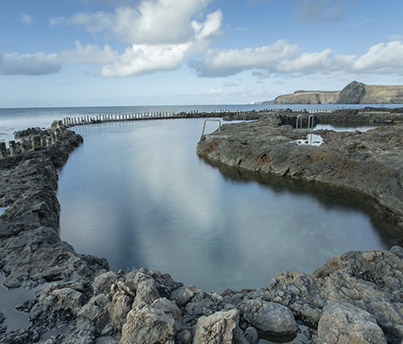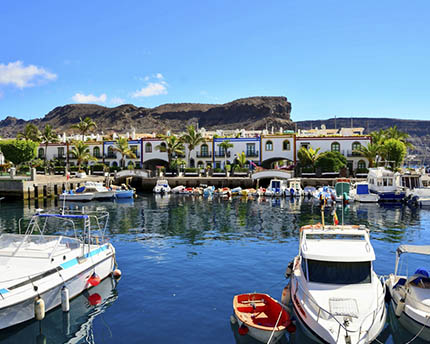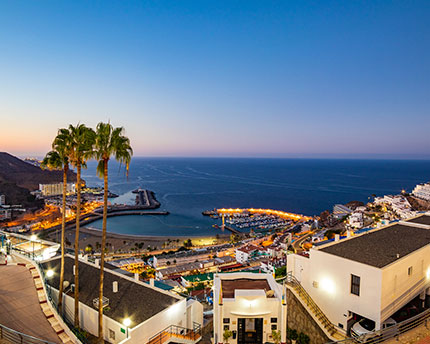The port town of Agaete, on the north-west coast of the island of Gran Canaria, is not your average resort town. Steeped in history, Agaete’s origins date back to even before the Spanish Christian conquerors disembarked on the island in the 15th century. Its ancestral roots are just as old as the neighbouring ancient burial site of Maipés necropolis, one of the most important archaeological sites on the island.
Mingle with the hospitable and friendly chanos, the name given to Gran Canaria islanders, as you wander the picturesque streets lined with dazzling whitewashed houses and wrapped in the sultry smell of coffee coming out of inviting coffee shops and restaurants.
Situated just 32 km north from Las Palmas, Agaete is nestled in a dramatic natural setting, surrounded by lush meadows and plunging volcanic rock cliffs. Read on to discover the best this tiny enclave has to offer.
What to see in Agaete
Get your walking shoes ready because the best way to explore the town is by foot! Start at the town’s central square, Plaza de la Constitución and admire the town’s lovely main church, Iglesia de la Concepción. It only dates back to 1875, but actually stands on the site where a much older church once stood before being burnt down in a devastating fire.
Located right behind the church, you’ll discover the colourful and festive Ethnographical Museum of La Rama. The museum is an ode to the rich, historical origins of the town’s most important annual festival ‘La Rama’ and its indigenous ritual origins that are still preserved to this day. You can live this popular festival first hand if you happen to be in the area at the beginning of August.
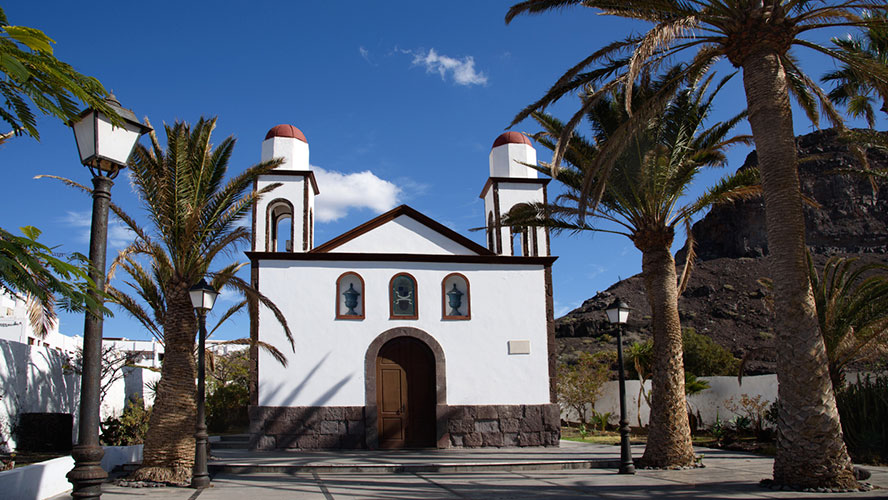
Then, walk along the main street to reach the leafy garden of Huerto de las Flores nestled in a lush ravine. This charming, almost secret garden was created by an affluent local family in the 19th century and has a plethora of exotic tropical plants from Central America. The garden is now managed by the town council and is open to visitors in the morning – the ideal time to soak in the velvety serenity of this beautiful garden.
Take a short walk to the town’s outskirts, through the lush Agaete valley to reach one of the most important archaeological sites of the island: the Maipés necropolis. This ancient burial site houses 645 tumuli of all shapes and sizes, some of which are more than 1,300 years old. This is not surprising as Agaete was an important town in the pre-Hispanic guanartemato (kingdom) of Gáldar. The necropolis is open to the public from Tuesday to Sunday from 10 a.m. to 5 p.m. Guided tours are also available.
Another historical landmark worth visiting on the outskirts of the town is the 15th-century stronghold Casa Fuerte. It was commissioned in 1481 by the Spanish conquistatores Alonso de Lugo and Fernán Peraza as a military operational base during the Conquest of Gran Canaria. The famous Canarian historian Millares Cubas claims the king of Gáldar was imprisoned here before being presented to the Catholic Monarchs. Unfortunately, the site is in ruins despite its historical significance.
Puerto de las Nieves
Puerto de las Nieves is located just one kilometre from Agaete. The port is the closest spot to Tenerife on Gran Canaria and has become an important communication hub between the two islands and the busy waterway traffic has had an environmental impact on the surrounding aquatic ecosystems.
Nevertheless, the port has retained its old world, seafaring charm. From the quaint, whitewashed cottages to the pleasant waterfront Paseo de los Poetas, where you can purchase ocean-fresh fish or observe the fishermen with their rods, languidly fishing off the old pier. If you are looking for some underwater adventure, grab your fins and head to the area around Roque Partido, a monolithic rock formerly known as the Dedo de Dios (God’s Finger), for some scuba diving. The port also boasts some excellent and affordable restaurants just opposite the pier. These are just some of the reasons to come discover the Puerto de Agaete.
The port also affords sweeping views of the soaring, southern-facing cliffs and of the iconic landmark of Roque Partido. It was known as the Dedo de Dios until November 2005 when the tropical storm Delta swept through and broke off the thin top of the rocky monument.
The port also houses the stunning 16th-century, neoclassical church of Nuestra Señora de las Nieves. Be sure to take a look inside at the exceptional Mudejar coffered ceiling and the impressive Flemish triptych painted by Joos van Cleve around 1515 and dedicated to the Virgen de las Nieves (Virgen of the Snows).
Beaches and natural pools in Agaete
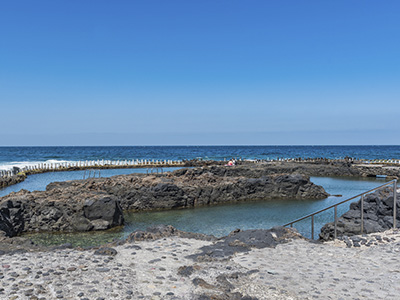
Head south along the west coastal road, towards Aldea de San Nicolás to reach two of the area’s top beaches: Guayedra and Pinar de Tamadaba. Guayedra is a stunning natural enclave, surrounded by vertiginous crags, reaching more than 1,400 m high.
The beach at Pinar de Tamadaba is also located in unique, verdant landscape, surrounded by pine trees. The sparkling water may be enticing but the rough undercurrents can be hazardous and sweep you towards dangerous areas. The beach is a popular destination among nudists and young campers.
Playa del Risco is located in the same area bearing its name. It is also offers superb natural landscapes and powerful undercurrents. You can enjoy a wonderful dip but be mindful of those undercurrents when you do. Weekends can be especially busy.
The natural pools of Las Salinas of Agaete
Three natural swimming pools are sheltered from the open ocean by concrete protective columns that resemble a castle. The pools are linked by volcanic tubes and boasts spectacular views of Mount Teide, rising over the Atlantic Ocean. This is a great destination for the entire family and the site is equipped with a series of amenities, such as: a sun terrace, a restaurant and parking. You can either take a leisurely walk from the port to reach Las Salinas or make the 5-minute drive.




































































